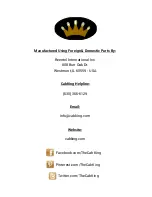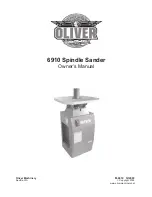
11
The CabKing-6V3 is configured with two electroplated diamond wheels, four resin diamond
wheels, one full face diamond flat lap and one canvas polishing pad with diamond paste. The
direct drive motor on the CabKing-6V3 eliminates belts and other exterior motor parts to
maintain or replace. The water system is unique and allows you to independently control the
water spray on the wheels. Always use adequate water while in use to avoid running the wheels
dry. If the wheels become covered with stone residue, increase the water flow. We recommend
wearing the included apron to keep you from getting wet while you work.
Another advantage to our water system is that you can adjust the spray
angle on the wheels so you can use wheels of different widths. Adjust
the nozzles located at the end of the y-split under the hood by twisting to
the left or right (FIG. G).
You can use the CabKing-6V3 to grind and polish all kinds of shapes and designs out of rock,
synthetic rock, glass and metal. The most popular use of the CabKing-6V3 is making
cabochons. The general process of making a cabochon is described below.
Grinding
— Start with the electroplated diamond wheels on the left shaft to complete the
grinding process. The grinding process shapes your cabochon and removes any surface
irregularities so the stone can be smoothed and polished. Hold your stone free hand or on a dop
stick. Begin with the 80# electroplated diamond wheel. Completely grind the surface of the
stone using adequate water. If the stone is not ground thoroughly, scratching will occur. Making
sure that all scratches are removed is the most important part of grinding a cabochon. We
recommend frequently drying your cabochon with a paper towel or clean rag to reveal the
remaining scratches while you work. Repeat this process for the 220# electroplated diamond
wheel.
MACHINE USAGE
FIG. G
80#
Coarse grinding
Pre-polishing
220#
280#
600#
1200#
3000#






































